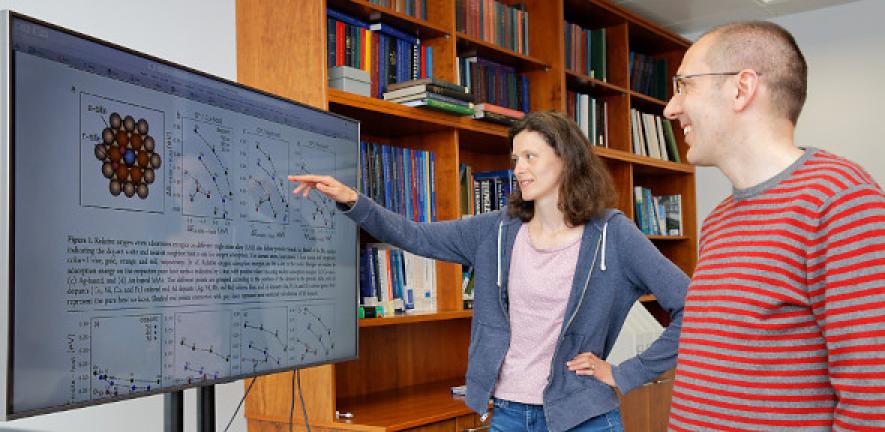
The team has been awarded the Royal Society of Chemistry Faraday Division Horizon prize, which recognises the superiority and importance of so-called single-atom alloy (SAA) catalysts. The catalysts were developed from collaborative work involving 1968 Professor of Chemistry Angelos Michaelides and postdoctoral researcher Dr Julia Schumann, working with scientists from University College London, Tufts University and UC Santa Barbara.
Chemistry is fundamentally about transforming one molecule into another, often with the aid of catalysts. But almost all large-scale industrial chemical processes are energy-inefficient and leave enormous carbon footprints, partially because they rely on catalysts that were developed largely by trial-and-error experimentation in the last century.
The SAA catalysts are a completely new approach to optimising the efficiency of catalysis. Instead of trial-and-error, the team used rational design, guided by physical insights obtained through theory. As a result, the catalysts are able to utilise precious metals at the ultimate limit of atom efficiency.
“It has taken many decades of theoretical, algorithmic, and computational developments to get to a stage where ab initio computational techniques can accurately describe systems of direct experimental relevance,” said Michaelides. “It is exciting that the era of theory driven computational materials discovery has arrived.”
Schumann, who works with Michaelides in the ICE group, added: “It is very challenging to choose the right model to provide a useful guide for the next experiments, but the productive exchange and feedback between theory and experimental colleagues made this project so much fun to work on.”
The SAA catalysts will be critical in the drive towards the more sustainable chemical processes essential to achieve net carbon zero. Their low cost has also attracted commercial interest, and they are now central to the development of future chemical and energy technologies.

